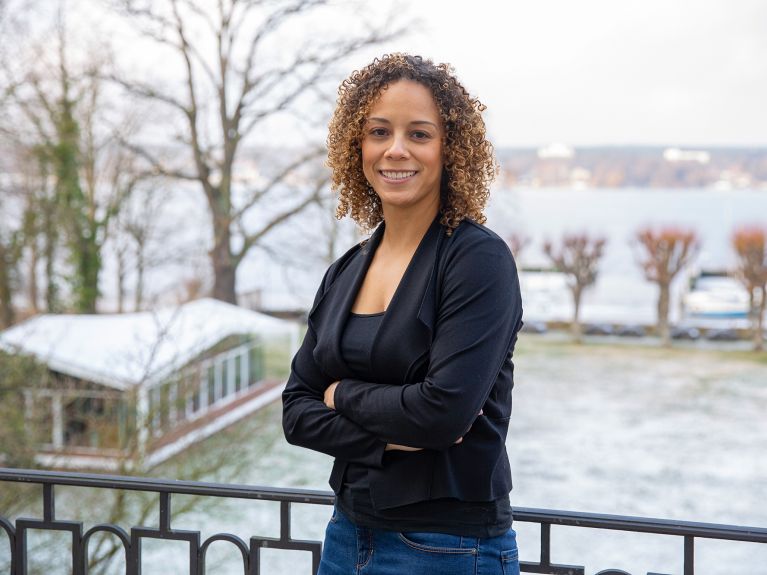What do we want to preserve?
Cultural preservation in East and West Germany: The US academic Jennifer Allen is conducting research as a Fellow of the American Academy in Berlin.

Dr. Allen, when did you decide to specialize in modern German history and why?
As a university student in the US, I was part of an interdisciplinary study program. I was interested in a bunch of different subjects. History was only one of them. But as I prepared to write my senior thesis, I took a particularly powerful course on the history of modern Germany. I then realized that this was something I wanted to study further.
Why did you decide to apply for a fellowship at the American Academy?
One major advantage of the American Academy is that it brings together scholars from a wide range of fields. And it supports them so that they are freed to work on their respective research projects. The American Academy is also excellent at helping scholars to network within Germany. I’m a relatively young academic, and it has helped me build connections I would not otherwise have been able to at this stage in my career.
What is your research project at the American Academy in Berlin?
It’s a study of both East and West German postwar ideas about what was worth preserving after catastrophe. In the wake of World War II, many countries agreed it was important to establish guidelines to prevent the destruction of important cultural goods during any subsequent wars. In 1954, they formalized their ideas in the “Convention for the Protection of Cultural Property in the Event of Armed Conflict,” which was signed at The Hague in 1954. Former West Germany signed on to the treaty right away. Although the treaty laid out a set of principles about what to preserve, it gave individual states the freedom to decide how.
What did former West Germany want to save?
West Germany focused on protecting the most important objects of German cultural patrimony. A group of scholars, archivists, scientists, and government officials began to make microfilm copies of things like the architectural blueprints of the Cologne Cathedral, the Peace of Westphalia, and West Germany’s “Basic Law.” The collection was really intended to be a neutral archive and included objects of pride, objects of shame, and everything in between. Over time, the collection grew and was eventually moved to a decommissioned silver mine on the French-German border. Today, it includes nearly 1 trillion images. It’s called the “Central Recovery Archive”.
Was there a similar project in the former GDR?
The GDR signed onto the convention in 1974, twenty years later than West Germany. Afterward, it began some similar initiatives to preserve cultural heritage, but they were much smaller. What I’ve discovered in my research, however, is that East Germany had a totally different, contemporarily relevant story of preservation in the form of seed and gene banking. During WWII, German scientists started an agricultural research institution in the town of Gatersleben, which later fell in the Soviet Zone. The institution still exists and is now called the “Leibniz Institute of Plant Genetics and Crop Plant Research”. One of its most successful projects was to develop a seed bank with the goal of preserving Central European agricultural biodiversity.
What do both projects have in common?
They are both stories about visions of the future and the ways people imagine catastrophe. And they both tell us about interpretations of what’s worth preserving in order to save society from that catastrophe. Both the East and West German projects developed as the Cold War was intensifying. And of course Germany was a major focus during the Cold War. So both projects answer the question: What do we do if Germany gets destroyed by nuclear weapons?
What happened after German Reunification?
This is a question I aim to answer with this project. I want to figure out how the eastern investment in biodiversity and the western investment in cultural heritage came together in reunified Germany. I think it’s important and interesting that one of the most famous seed banks worldwide, the “Svalbard Global Seed Vault” in Norway, is partly funded by an NGO headquartered in Germany: “Crop Trust.”
Interview: Nicholas Czichi-Welzer
